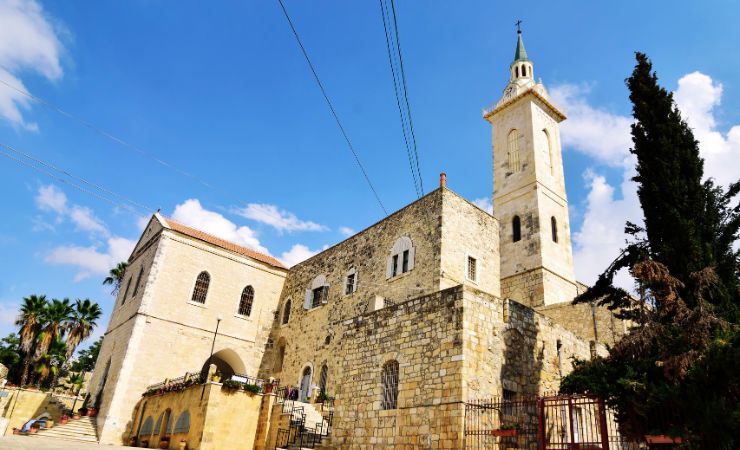Exploring Herod's Family Tomb
In the heart of Jerusalem lies Herod’s Family Tomb, a historically rich site offering insights into what was thought to be the real tomb of the Herod’s dynasty.

Location
Herod’s Family Tomb is located near the Damascus Gate, north from the old city of Jerusalem.
The Story Behind the Tomb
Herod’s Family Tomb, also known as Herod’s Monument, was first identified as a significant Herodian site due to its grand construction and strategic location near the ancient city’s walls. Discovered in 1892 by Swiss archaeologist Conrad Schick, the tomb features intricate stonework and a unique architectural style typical of Herodian-era monuments.
The tomb’s association with King Herod stems from its elaborate architectural style and the use of opus reticulatum, a Roman wall-building technique involving a lattice pattern of stones. This method was uncommon in the Near East but found in other Herodian structures, indicating a possible connection



Current Archaeological Understanding
Recent research suggests that while the tomb reflects Herodian architectural grandeur, it may not be Herod’s personal tomb. Scholars now believe it likely served as the burial site for a prominent family of the period, but not necessarily Herod’s immediate relatives. Josephus, the Jewish historian, mentions “Herod’s Monument” in Jerusalem, which aligns with the tomb’s characteristics.
Herod's Family Tomb's Structure and Archaeological Findings
The structure’s plan of Herod’s Family Tomb is strikingly similar to Roman round tomb-monuments, like those of Augustus and Hadrian in Rome. This similarity, along with the Herodian period pottery and ashlar decorations found at the site, supports the theory that it dates back to Herod’s time. Josephus’s references to “Herod’s Monument” in Jerusalem further imply that this structure served as a mausoleum for Herod’s family The tomb consists of several notable features:
- Rock-Cut Chambers: Five underground rooms arranged in a cross-shaped layout.
- Sarcophagi: Originally housed intricately carved sarcophagi, now relocated to the Monastery of Constantine.
- Entrance and Rolling Stone: Marked by a large rolling stone, a common feature in ancient Jewish burial sites.
- Decorative Elements: Walls built with Herodian-style ashlars and decorated with opus reticulatum, a Roman construction technique involving a lattice pattern of stones filled with concrete and covered with plaster. This method was widely used in Italy but is rare in the Near East.
Detailed Findings and Structure:
- Opus Reticulatum: This technique involved laying small, uniformly cut stones in diagonal rows, creating a patterned structure. Behind this lattice, concrete was poured to form a strong wall core. Plaster, sometimes decorated with frescoes, covered the lattice pattern, creating a smooth outer surface.
- Concentric Circles: Excavations revealed two concentric circular walls, suggesting the structure was initially an imposing monument with an outer wall about 110 feet in diameter and an inner wall about 40 feet in diameter.
- Herodian-Style Ashlars: Both Schick and later archaeologists found decorated ashlar blocks, indicative of the original beauty and magnificence of the structure.
Sources and Additional Information
Nearby Sites
- The Mount of Olives: A historical and spiritual site with many churches including Dominus Flevit, Chapel of the Ascension, Church of All Nations, and more. The place offers stunning views of Jerusalem.
- The Kidron Valley: Known for its ancient tombs and significance in both Jewish and Christian traditions.
- The City of David: An archaeological park providing insights into Jerusalem’s early history.
- The Garden Tomb: A site of Christian pilgrimage believed by some to be the burial and resurrection place of Jesus.



